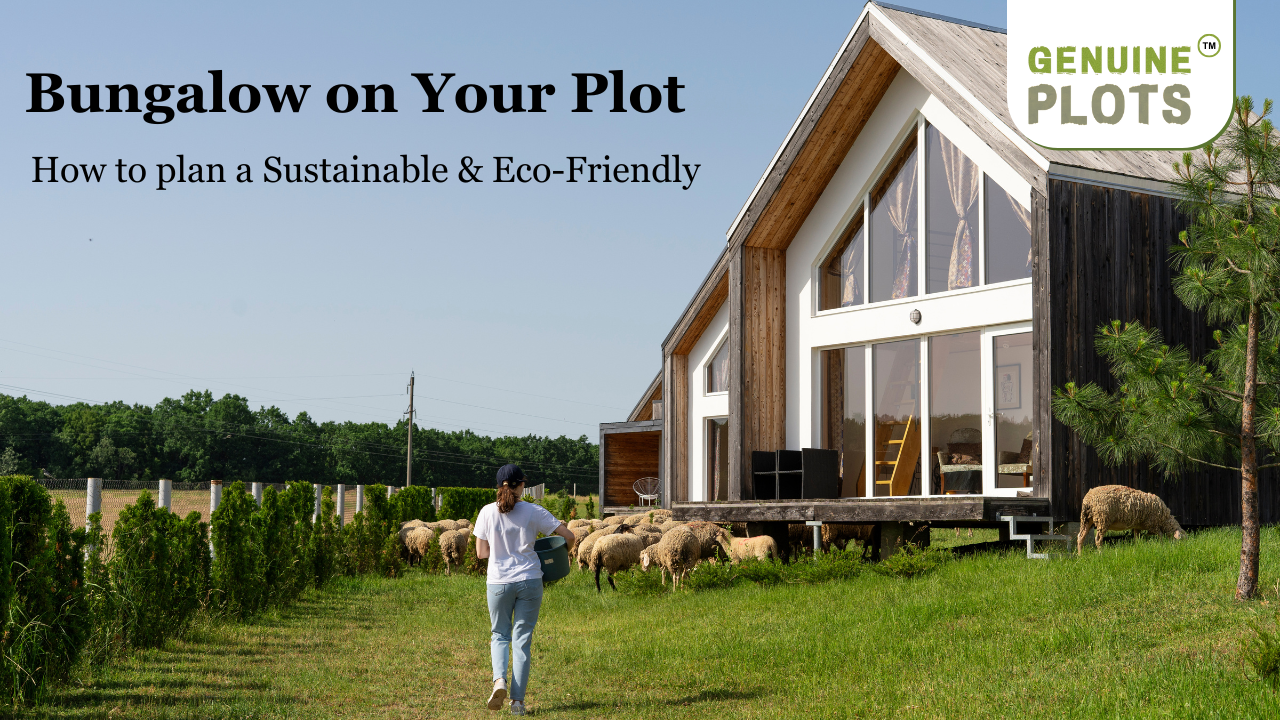Prev Post
Which is a Better Investment A Plot or an Apartment Understanding the Financial AdvantagesBuilding your own home or bungalow is a dream for many—and what if that dream could also be sustainable?
You’ve probably heard the term “sustainable living” quite a lot lately. But when it comes to homes, it’s more than just a buzzword. A sustainable home doesn’t just help the environment—it also helps you. From electricity bills to indoor air quality, a sustainable home offers long-term comfort.
1. Start with Smart Site Planning and Passive Design
Before you start building, think about how your home will sit on the land.
Your bungalow should face east or south so that you get maximum natural light and ventilation throughout the day.
Place large windows on south-facing walls to let in sunlight, and use shades or overhangs to block extra heat.
Use of brick or concrete help in keeping indoor temperatures stable.
2. Use Local and Natural Building Materials
Employ local material such as bamboo, reclaimed wood, or stabilized compressed earth blocks.
For walls, use Insulated Concrete Forms (ICFs). They are long-lasting, resistant to damage, and cool your home in the summer and warm it up during winter.
Choose low volatile organic compounds (VOC) paints, glues, and adhesives to improve indoor air quality.
3. Focus on Energy Efficiency
Install solar panels to reduce your electricity bills and carbon footprint.
Use energy-efficient appliances and smart systems like programmable thermostats and automatic lighting to reduce energy wastage.
4. Water Smartly
Establish a rainwater harvesting system.
Treat and reuse shower and sink water (called greywater) for your garden.
Fit low-flow appliances in bathrooms and kitchens to cut water consumption.
5. Green Landscape for Outdoors
Use native plants which require less water and are pest-resistant naturally.
Employ green roofs and vertical gardens to enhance insulation as well as add greenery.
For driveways and sidewalks, have gravel or permeable pavers that allow water to percolate through and minimize runoff.
6. Follow Smart Construction Practices
Plan your home to accommodate expansion in the future to avoid breaking walls at a later stage.
Organize a waste management system—separate wastes and recycle whenever possible.
- Add Value to Property with Green Certifications
To contribute value to your property, aim to achieve green certifications like LEED or IGBC. Also, talk to your Pune local authority for building codes and environmental legislations.
Conclusion
With proper planning and materials, your green house will be environmentally friendly, energy-efficient, and healthy—and yet give your family a superior way of living.







